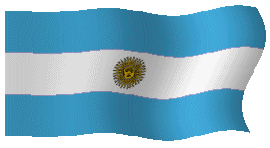
B"H
Jewish  Tours
Tours
 Buenos Aires, Argentina
Buenos Aires, Argentina
ARGENTINA, South American Federal Republic, general population (2004) 39,150,000; Jewish population 190,000.
The establishment of the State of Israel had a crucial impact on the character of the Jewish schools. All the schools that previously taught Yiddish started a transition to Hebrew, a process that ended with an overwhelming predominance of Hebrew in all the schools in the mid-1960s. Following the foundation of the Va'ad ha-Kehillot in 1952, the Va'ad ha-Ḥinnukh of the Chevra Kedusha – AMIA, and the Va'ad ha-Ḥinnukh ha-Roshi merged in 1957 to form the Va'ad ha-Ḥinnukh ha-Merkazi (Central Education Committee). All Jewish Ashkenazi schools, except those belonging to the Communists, were affiliated to this committee. Gradually most of the Sephardim and certain other communities (such as those of German origin), joined this Va'ad ha-Ḥinnukh. Until the end of the 1960s most Jewish schools provided supplementary education (20 hours weekly) for pupils attending public schools. This school structure was maintained, not only for economic reasons but also because of a deep concern to maintain close relations with the non-Jewish population. In 1966 the official schools gradually started introducing the long school day, which was a threat to the activities of the Jewish complementary schools. At the end of the 1960s the Jewish schools started to transform themselves into day schools to include the general Argentinean curriculum. In the mid-1970s the entire Jewish education network consisted of day schools; two of them had already existed from the beginning of the 1960s and were recognized as private schools. The budget required for building and maintaining such schools, however, was correspondingly much higher, and when public funds could not be acquired, parents of modest means were not able to afford to send their children to these schools. This problem was partially solved with special funds provided by community institutions and by the Jewish Agency which subsidized those students.
In 1968 the Jewish educational system of Greater Buenos Aires comprised the following: 5,065 children between the ages of two and five in 51 kindergartens; 8,900 pupils in 58 elementary schools (seven grades), eight of which were day schools and the rest supplementary schools; and 1,675 pupils in 13 high schools, four of which were yeshivot. In the rest of Argentina, there were 969 children in 33 kindergartens; 2,787 pupils in 52 elementary schools; and 633 pupils in eight high schools. These figures added up to 20,033 students in Jewish schools throughout Argentina; the students in the 5 to 12 age group comprised about 45% of the total Jewish population of this age. In spite of these relatively high rates of participation, there was considerable dropout from one year to the next, especially between elementary and secondary school. In 1967, in all the schools run by the Va'ad ha-Ḥinnukh in Buenos Aires, only 560 pupils finished elementary school and 126 graduated from secondary school.
In those years the division according to political trends
diminished. All the schools, apart from the Communist schools, adopted Hebrew as
the main language for Jewish studies (some kept Yiddish) and stressed the study
of modern Israel and the development of Jewish national consciousness. The
existing Communist schools in Buenos Aires, with several kindergartens, five
primary schools, and two secondary schools were excluded from the Va'ad ha-Ḥinnukh
in 1952 when all the Communist organizations were expelled from DAIA
because of their refusal to condemn the antisemitic and anti-Zionist trials in
Czechoslovakia and Russia. In 1953 they established an independent school
network under the umbrella of the Jewish Communist central organization
Yiddisher Cultur Farband – ICUF (Jewish Cultural Organization)
with ten schools and close to 2,000 students all over the country. In the 1960s
the number of these schools gradually
From the 1960s most of the teachers in all the schools were Argentineans, trained in local seminaries. A new institution of higher Jewish education, Ha-Midrashah ha-Ivrit, was established in the mid-1950s by the State of Israel, with the cooperation of local individuals. It trained high school teachers, and by the end of the 1960s had close to 200 students.
Informal education activities organized by Zionist youth movements, social-sport organizations like Sociedad Hebraica Argentina, Maccabi and Hacoaj, and other communal institutions like the Conservative movement became more common and their activities attracted hundreds of children and adolescents. From 1962 AMIA and Hebraica, later with the support of the Youth Department of the World Zionist Organization, ran EDITTI, a school for youth leaders on the level of an institution of informal higher learning. Nevertheless the participation of youth in organizations of the Jewish communities was low and it became even lower among youth of university age. All the Jewish youth organizations were united in the Confederación Juvenil Judeo Argentina, which represented Argentinean Jewish youth locally, nationally, and internationally.
|
Visite nuestro sitio/Visit our home page: |